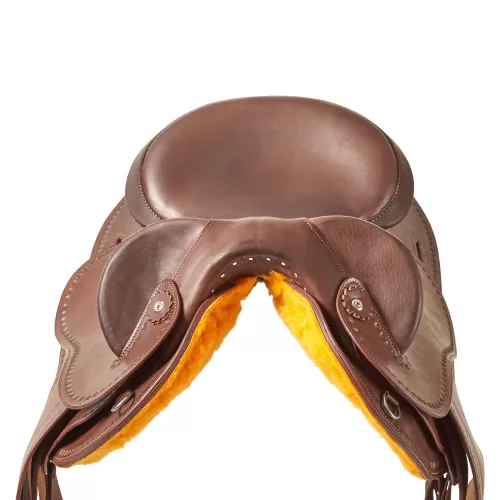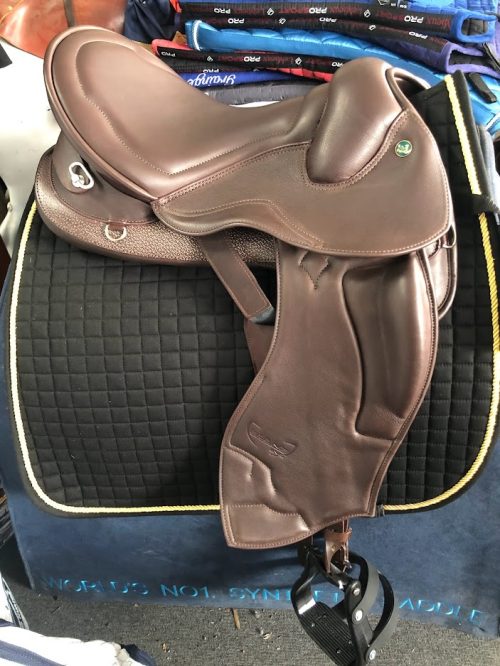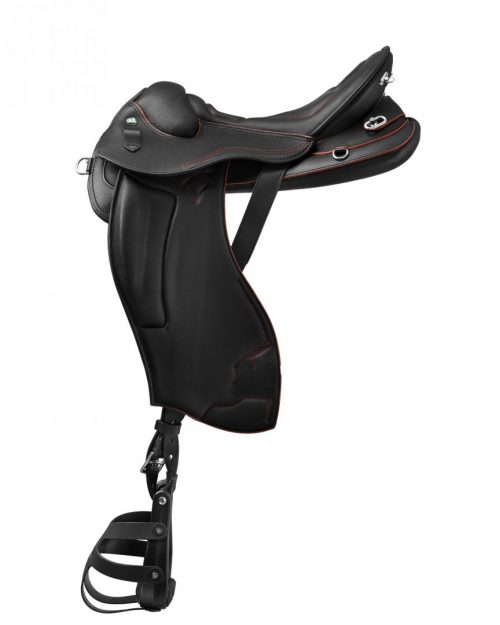
Bonnetts – We fit the best saddles.
Best Horse Saddles Brands – Wintec & Bates Horse Saddles
Wintec and Bates Dressage Saddles are our specialty.
At Bonnetts, we have been expertly fitting Wintec and Bates horse saddles since 1843. We stock the best horse saddle brands and custom fit each saddle to it’s rider.
Speak to us today to discuss your requirements and we will recommend the best horse saddle to suit your riding style and physique.
Bonnetts Winner of the Prestige Saddlery Dealer of the Year in Australia for the last 6 years and Bates and Arena Dealer of the Year in Australia for the last 4 years and Wintec Dealer of the Year in Australia for last 2 years.
Ask about all important fitting and fitting notes…
The Ultimate Guide to Horse Saddles
The history of horse saddles is a fascinating journey that reflects the evolution of equestrian culture and technology. Saddles have been used for thousands of years, with their origins tracing back to ancient civilizations. The earliest known saddles appeared around 700 B.in the regions of Central Asia, where nomadic tribes utilized simple pads to provide comfort and stability for both horse and rider.
These primitive designs were primarily made from natural materials such as wool or felt, serving as a basic means to secure the rider while riding across vast terrains. As societies advanced, so did the design and functionality of saddles, leading to innovations that catered to various riding styles and purposes. As you delve deeper into the history of saddles, you will discover that they played a significant role in warfare, agriculture, and transportation.
By the time of the Roman Empire, saddles had evolved into more sophisticated forms, incorporating features like stirrups that provided riders with greater balance and control. The Middle Ages saw the introduction of the high-backed saddle, which was designed for knights in armor, allowing them to remain secure during battle. Over the centuries, saddles continued to adapt to the needs of different cultures and riding disciplines, leading to the diverse array of saddle types we see today.
This rich history not only highlights the importance of saddles in equestrian activities but also underscores their role in shaping human interaction with horses throughout time.
Key Takeaways
- Horse saddles have a long history dating back to ancient civilizations, evolving from simple pads to the sophisticated designs we see today.
- There are various types of horse saddles, including English, Western, and endurance saddles, each designed for different riding disciplines and preferences.
- When choosing a saddle for your horse, consider factors such as the rider’s experience, the horse’s conformation, and the intended use of the saddle.
- Proper saddle fit is crucial for both the horse and rider’s comfort and performance, requiring regular assessment and adjustments as needed.
- Regular care and maintenance of your saddle, including cleaning, conditioning, and storage, are essential for its longevity and performance.
Different Types of Horse Saddles
When it comes to horse saddles, the variety available can be overwhelming, yet each type serves a specific purpose tailored to different riding styles and disciplines. You may find yourself exploring options such as English saddles, Western saddles, dressage saddles, and jumping saddles, each designed with unique features that cater to particular needs. English saddles are typically lighter and more streamlined, allowing for greater communication between horse and rider.
They are favored in disciplines such as dressage and show jumping, where precision and agility are paramount. On the other hand, Western saddles are characterized by their larger size and heavier build, designed for long hours of riding and working cattle. Their deep seats and wide swells provide comfort for both horse and rider during extended periods in the saddle.
In addition to these primary categories, you may also encounter specialized saddles like endurance saddles, which are designed for long-distance rides, or trail saddles that prioritize comfort and stability over long journeys through varied terrain. Each type of saddle is crafted with specific materials and construction techniques that enhance performance and comfort. For instance, jumping saddles often feature a forward flap to accommodate the rider’s position during jumps, while dressage saddles have a deeper seat to promote proper posture.
Understanding these differences is crucial as you navigate the world of equestrian equipment, ensuring that you select a saddle that aligns with your riding goals and preferences.
How to Choose the Right Saddle for Your Horse
Choosing the right saddle for your horse is a decision that requires careful consideration and understanding of both your horse’s anatomy and your riding style. You may begin by assessing your horse’s conformation, as different breeds and body types will require different saddle shapes and sizes. A well-fitting saddle should distribute weight evenly across your horse’s back to prevent discomfort or injury.
It’s essential to take measurements of your horse’s withers, back length, and girth to ensure that you select a saddle that fits properly. Additionally, consider your horse’s level of training and discipline; a young or inexperienced horse may benefit from a more forgiving saddle design that allows for greater freedom of movement. As you explore your options, it’s also important to reflect on your own riding preferences and goals.
Are you looking for a saddle that offers versatility for various disciplines, or do you have a specific focus in mind? Your choice should align with how you intend to ride—whether it’s leisurely trail rides or competitive events. Consulting with experienced saddle fitters or trainers can provide valuable insights into what might work best for both you and your horse.
Ultimately, the right saddle will enhance your riding experience while ensuring your horse remains comfortable and happy.
Understanding Saddle Fit and Comfort for Both Horse and Rider
| Aspect | Horse | Rider |
|---|---|---|
| Proper Fit | Even pressure distribution, no pinching | Comfortable seat, proper leg position |
| Comfort | No rubbing or chafing | Supportive seat, no pressure points |
| Movement | Freedom of shoulder movement | Ability to maintain correct posture |
| Adjustability | Ability to adjust to horse’s changing shape | Ability to adjust stirrup length and seat position |
Understanding saddle fit is crucial not only for your horse’s comfort but also for your own riding experience. A poorly fitting saddle can lead to a host of issues, including back pain for your horse and difficulty in maintaining proper riding posture for you. When assessing fit, pay attention to key areas such as the gullet width, tree shape, and panel design.
The gullet should provide enough clearance over your horse’s spine to avoid pressure on sensitive areas while allowing for adequate shoulder movement. Additionally, the tree shape must match your horse’s conformation; a narrow tree on a wide horse can cause pinching, while a wide tree on a narrow horse can lead to instability. For you as the rider, comfort is equally important.
A well-fitted saddle should allow you to maintain a balanced position without excessive strain on your legs or back. Consider how the seat depth and flap length affect your leg position; a deeper seat may provide more security but could restrict movement if you’re jumping or performing other dynamic maneuvers. It’s beneficial to test different saddles while mounted to gauge how they feel during various activities.
Remember that both you and your horse deserve a saddle that promotes comfort and performance; investing time in understanding fit will pay off in improved riding experiences.
Proper Saddle Care and Maintenance
Proper care and maintenance of your saddle are essential for ensuring its longevity and performance. Regular cleaning is crucial; dirt, sweat, and oils from both horse and rider can accumulate over time, leading to deterioration of the leather or synthetic materials used in saddle construction. You should establish a routine cleaning schedule that includes wiping down the saddle after each ride with a damp cloth to remove any debris.
Following this, use a quality leather cleaner or conditioner specifically designed for equestrian gear to keep the leather supple and prevent cracking. Pay special attention to areas that experience more wear, such as the flaps and stirrup leathers. In addition to regular cleaning, inspecting your saddle for signs of wear or damage is vital.
Check stitching for fraying or breaks, examine the girth straps for signs of weakness, and ensure that all hardware is secure. If you notice any issues, address them promptly to avoid further damage or safety hazards during rides. Storing your saddle properly is also important; keep it in a cool, dry place away from direct sunlight to prevent fading or warping.
Using a saddle cover can protect it from dust and moisture when not in use. By committing to proper care and maintenance practices, you can extend the life of your saddle while ensuring it remains safe and functional for both you and your horse.
Customizing Your Saddle: Options and Considerations
Customizing your saddle can be an exciting way to enhance both its functionality and aesthetic appeal. Many manufacturers offer options that allow you to tailor various aspects of the saddle to better suit your needs as a rider or accommodate your horse’s unique conformation. You might consider features such as seat size, flap length, tree width, and even color choices when exploring customization options.
This level of personalization ensures that both you and your horse can enjoy an optimal riding experience tailored specifically to your preferences. However, while customization offers numerous benefits, it’s essential to approach this process thoughtfully. You should take into account how each modification may impact fit and performance; for instance, altering the seat size could affect your balance in the saddle or how well it accommodates your horse’s movement.
Consulting with an experienced saddle fitter can provide valuable insights into which customizations will work best for you both functionally and aesthetically. Ultimately, customizing your saddle allows you to create a piece of equipment that not only meets your practical needs but also reflects your personal style as an equestrian.
The Importance of a Good Saddle Pad
A good saddle pad plays an integral role in ensuring comfort for both you and your horse during rides. It acts as an intermediary layer between the saddle and your horse’s back, helping to distribute pressure evenly while absorbing shock from movement. Without an appropriate pad, you risk creating pressure points that can lead to discomfort or injury over time.
When selecting a saddle pad, consider factors such as thickness, material composition, and shape; each element contributes significantly to how well it performs under various conditions. Moreover, different riding disciplines may require specific types of pads designed for optimal performance in those contexts. For example, dressage riders often prefer pads that offer minimal bulk while providing excellent moisture-wicking properties to keep their horses dry during intense workouts.
Conversely, Western riders might opt for thicker pads that provide additional cushioning during long rides or when working cattle. Regardless of discipline or preference, investing in a high-quality saddle pad is essential for promoting overall comfort and well-being for both you and your horse.
Tips for Properly Fitting and Adjusting Your Saddle
Properly fitting and adjusting your saddle is crucial for ensuring both comfort and performance during rides. Start by placing the saddle on your horse’s back without girthing it up; observe how it sits in relation to their withers and back muscles. Ideally, there should be enough clearance over the withers without pinching while allowing the panels to make even contact along the back without bridging or rocking excessively.
Once you’ve established an initial fit, girth up gently while monitoring how the saddle settles into place; it should not shift dramatically when tightened. After securing the girth, take some time to assess how well the saddle accommodates both you and your horse during movement. You may want to walk your horse around while mounted; pay attention to any signs of discomfort from either party—your horse may exhibit resistance or tension if the fit is off while you might feel unbalanced or restricted in movement if adjustments are needed on your end as well.
Regularly checking fit after changes in weight or muscle tone is essential; horses can change shape due to training or seasonal variations which may necessitate adjustments in saddle fit over time. By being proactive about fitting adjustments throughout your riding journey, you’ll foster a more enjoyable experience for both yourself and your equine partner.
FAQs
What are the different types of horse saddles?
There are several types of horse saddles, including English saddles, Western saddles, Australian saddles, and endurance saddles. Each type is designed for different riding disciplines and offers unique features to accommodate the rider’s needs.
What is the purpose of a horse saddle?
The primary purpose of a horse saddle is to provide a comfortable and secure seat for the rider while distributing the rider’s weight evenly across the horse’s back. Additionally, saddles also provide support and stability for the rider during various riding activities.
How do I choose the right horse saddle?
Choosing the right horse saddle depends on factors such as riding discipline, rider’s experience level, and the horse’s conformation. It is important to consider the fit, comfort, and functionality of the saddle to ensure a proper match for both the rider and the horse.
What are the key components of a horse saddle?
The key components of a horse saddle include the tree, which provides the framework and shape of the saddle, the seat, which offers a comfortable area for the rider, the panels or skirts, which provide cushioning and protection for the horse’s back, and the stirrups and girth, which help secure the saddle in place.
How do I maintain and care for a horse saddle?
Proper maintenance and care for a horse saddle involve regular cleaning and conditioning of the leather, checking for any signs of wear or damage, and storing the saddle in a dry and well-ventilated area. It is also important to have the saddle inspected and refitted by a professional saddle fitter as needed.












































